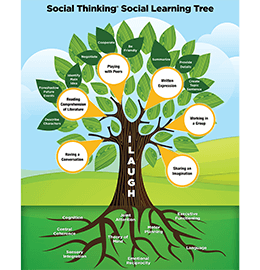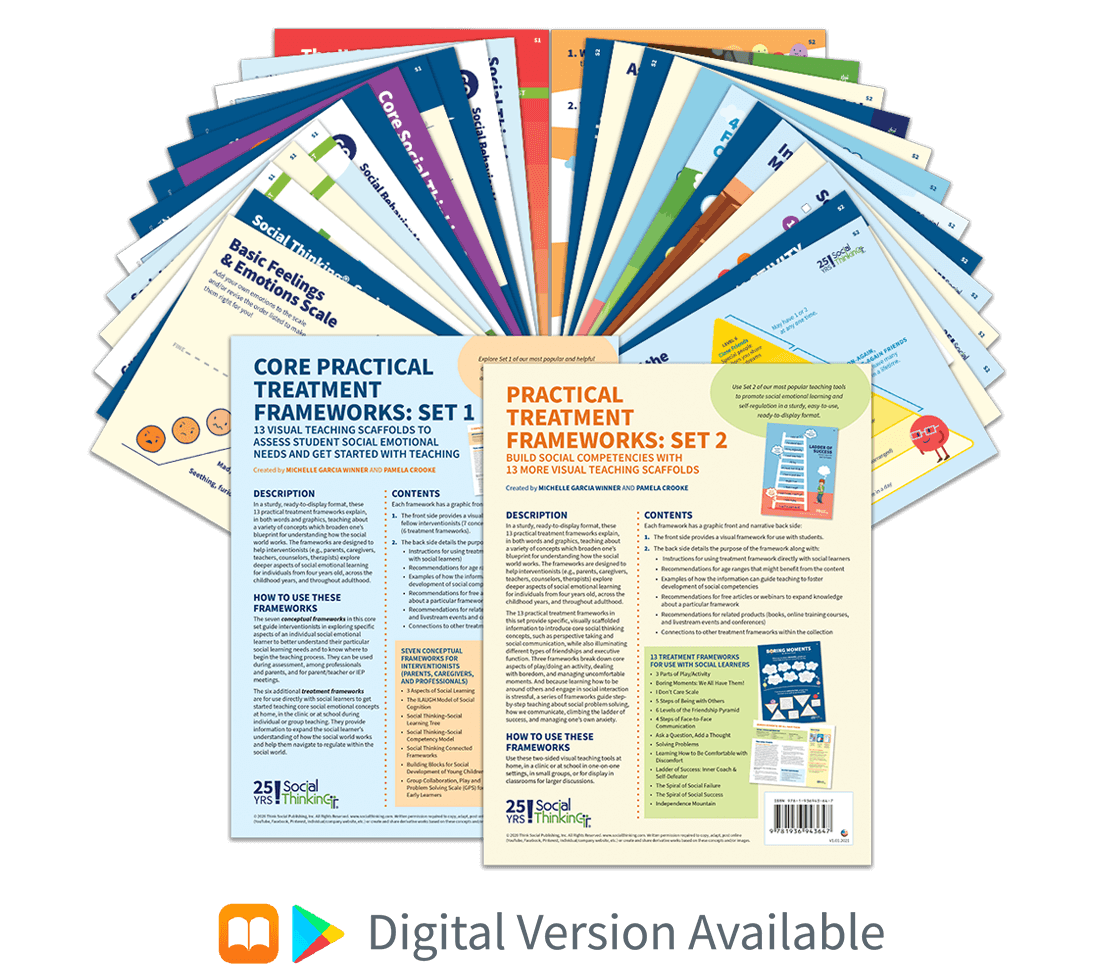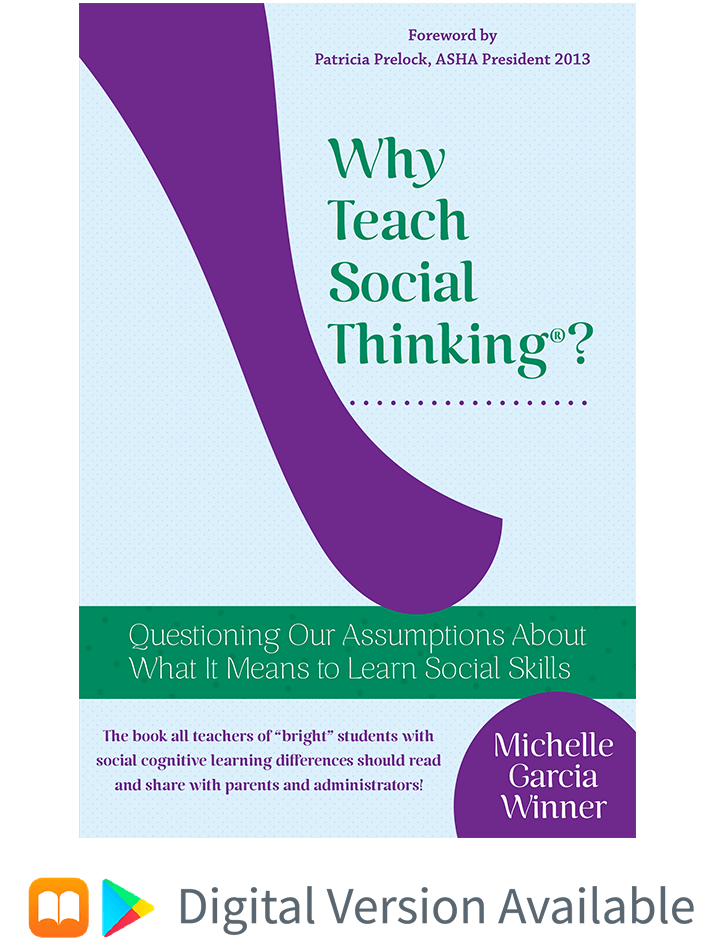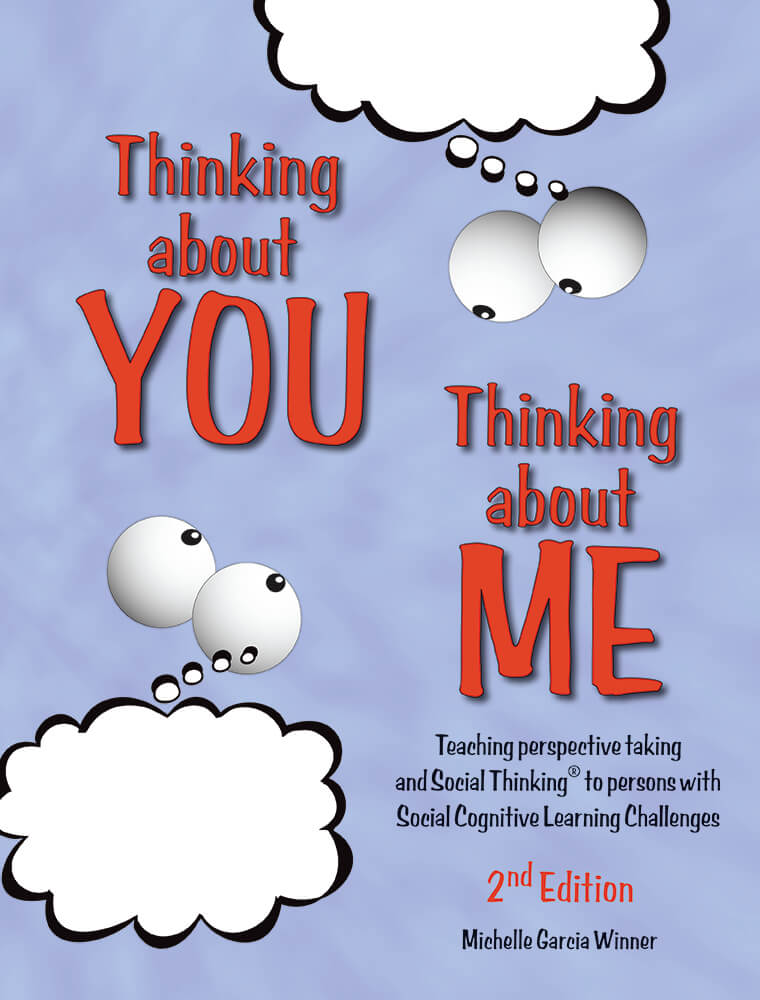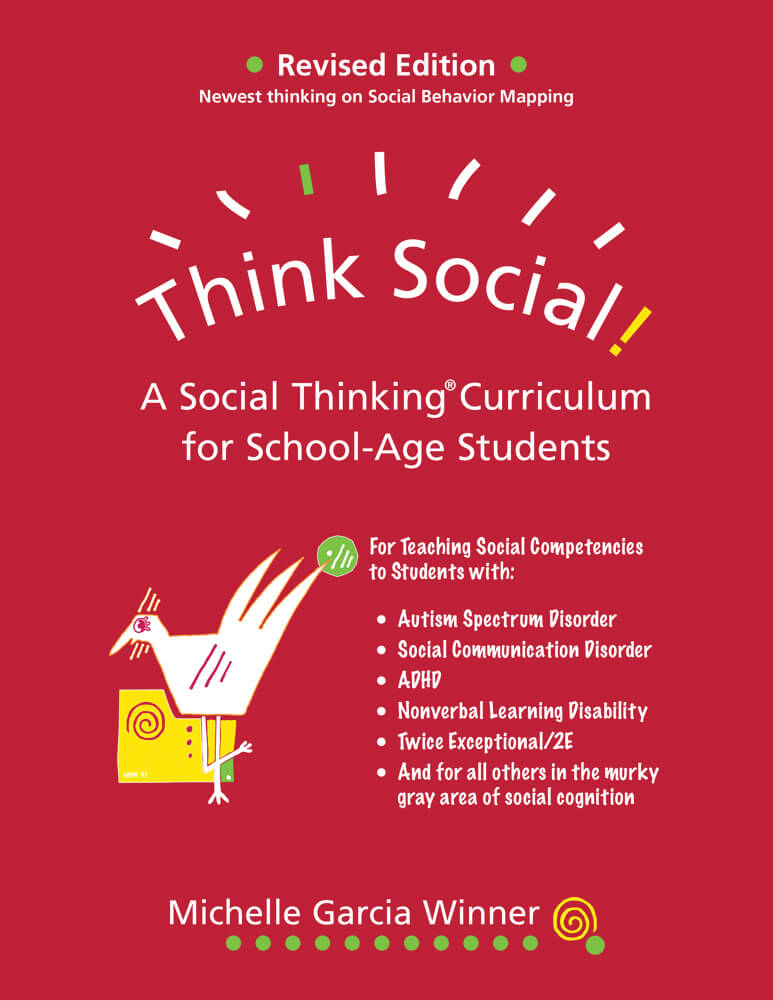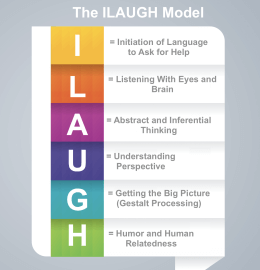Updated: December, 2023
© 2023 Think Social Publishing, Inc.
Learning evolves and brains are diverse in how they learn. The brain’s capacity to acquire new knowledge helps determine how and what we intuitively learn. Some learning happens as a matter of cognitive, social, and emotional development, i.e., from the “inside out,” while other learning happens “from the outside in.” Social learning helps us bond with our caregivers early in life then paves the way for language development, more advanced relations, and an understanding of abstract social concepts that grows through experience and maturity.
Social learning is typically a process that evolves naturally, starting from birth and continuing across the life span. Children move from primarily adult-based interactions to observational discovery of their peers as the prelude to play. Play as a developmental milestone also encourages other relevant skills to emerge, such as cooperation, perspective taking, and emotional regard for others. Not coincidentally, as children develop the ability to cooperate and play in a group they are readying themselves to learn in a classroom, when at five years old they enter school. As children grow and move from second to third grade, internationally the curriculum shifts from rote learning in a group to critical thinking in a classroom. At this point children are expected to relate well person to person on the playground, but also determine the motives of a character in a storybook as well as make predictions about how characters are thinking and feeling. Alongside this academic and cognitive shift, a similar social/emotional change occurs. Children’s goal-oriented play (tag, 4-square, etc.) evolves into deeper levels of personal connection, where children playfully relate to each other through conversational initiations and maintenance. Subtle but persistent advances in social development serve as the engine for subtle but persistent social emotional development. These advancing concepts are applied not only to our social interactions and group participation but also in the ways we interpret and respond to the curriculum within our coursework.
The social learning tree is a way to think about neurodevelopmental differences, encompassing both strengths and struggles found across many different learning systems. The tree can be helpful in talking about neurodiversity in learning and social development and support educators and caregivers in supporting learning from the roots to the leaves.
The Social Learning Tree
Consider social learning using the analogy of a tree, which develops a strong root system and trunk before it can grow healthy branches and leaves. As educators and caregivers, we strive to develop a pathway for supporting the personal authentic goals of our students. But all too often we start at the level of a specific skill rather than digging into the underlying concept. Sophisticated social learning requires one to acquire a range of social thought processes that synchronize to form the core of the social mind.
Therapy and support plans have traditionally been created by observing and/or assessing conversational and play weaknesses and then developing plans that attempt to remediate these (skill) challenges. We describe this deficit focused process as “teaching in the leaves.” However, with regard to social learning, a better way to think about this is to focus on understanding the strengths in the roots of the learning system as a way to encourage growth in the trunk and the branches. We describe this process as “teaching at the roots.” When we stop long enough to consider the learning process, we can all easily acknowledge that learning doesn’t start with a skill. Yet, that has been precisely where our focus has been in teaching “social skills.”
To help educators and clinicians better understand how social learning grows and matures we created the Social Thinking-Social Learning Tree, a visual representation of the process. Each part of the tree corresponds to a key part of the social journey.
The Root System Supporting the Social Learning Tree
We start at the roots, the foundation from which all our social learning grows. Research indicates that social development appears to begin prior to birth and emerges in the early days of life as babies actively pursue social learning through their daily experiences (Hirsh-Pasek & Golinkoff, 2003). As the young brain matures it maximizes this learning through experience and incidental practice. At the root level, social thinking and social learning involve:
- Joint attention, which includes reading intentions of others and paying attention to others and the environment.
- Emotional sharing and reciprocity.
- Central coherence - getting the gist of a message, determining relevance.
- Theory of mind, which involves interpreting that you know something different from me.
- Executive functioning, the ability to process and respond to many stimuli simultaneously.
- Sensory systems and integration.
- Cognition.
- Language.
The Trunk of the Social Learning Tree
The roots merge to form the trunk of the tree. The trunk represents an understanding of, and ability to, dynamically and synergistically apply the concepts of the root system in daily life. The developmental processes that occur at the root level stimulate our brain in such a way that we learn to interpret socially based information and participate in a range of ways in specific situations because we demonstrate an understanding of others' thoughts, intentions, emotions which help us relate and respond to others. The ILAUGH Model of Social Thinking (or social cognition) summarizes these key components of social learning; all of which develop within the first five years of a child’s development.
The Branches of the Social Learning Tree
Information channeled through the ILAUGH model (tree trunk) provides the necessary support for the growth of a variety of social interactions as well as other concepts that relate back to key social knowledge (the branches). Having established a strong root system and trunk, the branches support the emergence of new, more refined concepts and skills. That said, each branch, some of which are listed below, is dependent upon elements of the ILAUGH Model.
- Reading comprehension of literature (analyzing the protagonists and antagonists in a story, predicting their future actions, interpreting their meaning, understanding dialogue, etc.)
- Written and oral expression (writing to support main ideas, summarizing, being sensitive to one’s audience, taking the perspective of the teacher to better understand expectations, etc.)
- Self and project organization and executive functions (time management, planning and preparations, managing homework assignments, etc.)
- Playground play, hanging out, interactions both online and in-person
- Conversation
- Participating as a member of the classroom or a group
- Asking for help
The Leaves on the Branches of the Tree
The leaves relate to definable concepts and skills we use to engage in each of the larger concepts that are represented by a branch. For example, the leaves on the branch related to playground play would involve all the different concepts/skills one must use to play such as turn-taking, allowing a person to choose a game, coping with rule changes, determining if the group welcomes you, using language that keeps others having good thoughts about you to avoid being rejected or taunted, etc. Thus, it is often in the leaves that we observe the problems and write treatment goals to address the weak growth of the leaves, which may not be the most effective or efficient treatment choice.
Treatment Based on the Social Learning Tree
As we explain the Social Learning Tree, most people can understand the developmental and cumulative trajectory of social learning from roots through the trunk, branches and then to the leaves. Yet, ironically most social skill programs are set up to focus on one skill leaf in the tree and do not work on helping students strengthen their root system and trunk. When support focuses in the leaves and branches it is our experience that learning is more superficial. Students may not internalize that the information they are learning can be useful when engaged in their language arts curriculum or has anything to do with how they are interpreted as they share space in a classroom. On a related note, we see students fail to generalize their social skills to other situations because they have not first acquired core understanding of social learning concepts. Without the support the root system and trunk provide, the leaves have little chance to stay healthy and grow.
The Social Thinking methodology fosters a more robust root and trunk system provide valuable models upon which teaching and supports can be based. Our goal in developing the Social Thinking-Social Learning Tree, as well as the myriad Social Thinking materials, Thinksheets, books, and presentations is to demystify the process of social engagement and social interpretation. By doing so, we help educators, caregivers, and policy makers better understand how we can get to the root of the social learning struggles some students and clients face, and teach more efficiently and effectively from there.
Brief review of the ILAUGH Model of Social Thinking
I = Initiation of Language. Initiation of language is how we seek assistance or information.
L= Listening With Eyes and Brain. Listening is more than just taking in auditory information. It also requires individuals to integrate information they see, hear, and touch around them, such as the context of the situation and nonverbal cues from others, to fully interpret the message. Teachers depend heavily on the notion that students attend nonverbally to the expectations in the classroom. Being a “good listener” includes not just paying attention to what is being said, but more importantly, attending to the verbal and nonverbal cues that surround the words. However, this is NOT about eye contact. It’s about gathering information from the situation and people.
A = Abstract and Inferential Language/Communication. Comprehension requires both literal and figurative interpretations. Abstract and inferential meaning is often conveyed subtly, through verbal and nonverbal communication coupled with social knowledge of the people and situation. Interpretation depends in part on “making a smart guess.” It also relies on taking perspective. Abstract and inferential language interpretation is heavily woven into our language arts, social studies, and science curriculums. It is also a skill set heavily applied in play and conversation.
U = Understanding Perspective. This is how we understand the emotions, thoughts, beliefs, experiences, motives, intentions, of ourselves and others. Taking perspective helps us to be part of any type of group (social or academic). It is integral to academic subjects that require understanding other people’s minds, such as reading comprehension, history, social studies, etc. It is also key for formulating clear written expression.
G=Gestalt Processing/Getting the Big Picture. Information is conveyed through concepts and not just facts. Being able to relate the little bits of information to a whole is gestalt processing in a nutshell. When individuals participate in a conversation they intuitively understand the underlying concept being discussed. This knowledge helps them stay on track. When reading, one has to follow the overall meaning (concept) rather than just collect a series of facts. Like the other elements mentioned above, conceptual processing is another key component to understanding social and academic information. Furthermore, conceptual processing and organizational strategies (as well as other executive function tasks) go hand in hand.
H= Humor and Human Relatedness. Human relatedness is at the heart of social interaction. Humor, when used at the right time, place, and with the right people promotes relatedness with others.









